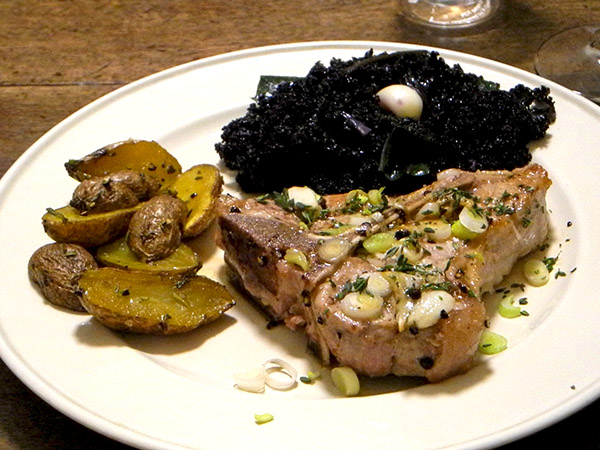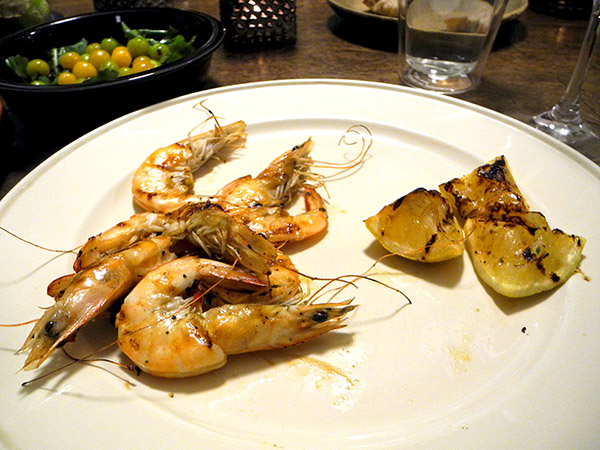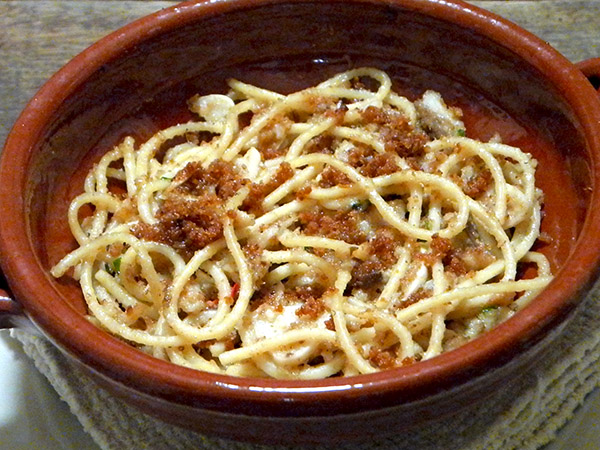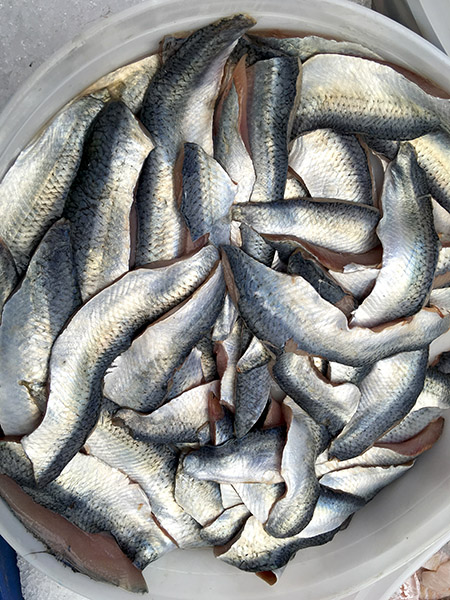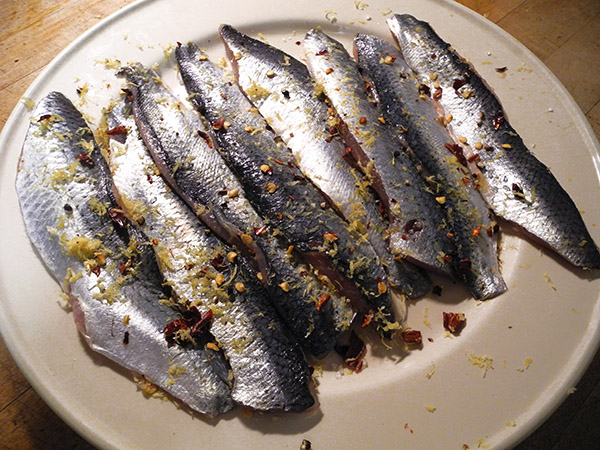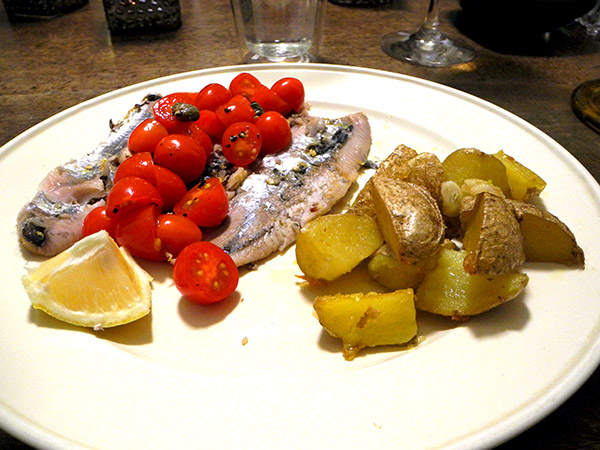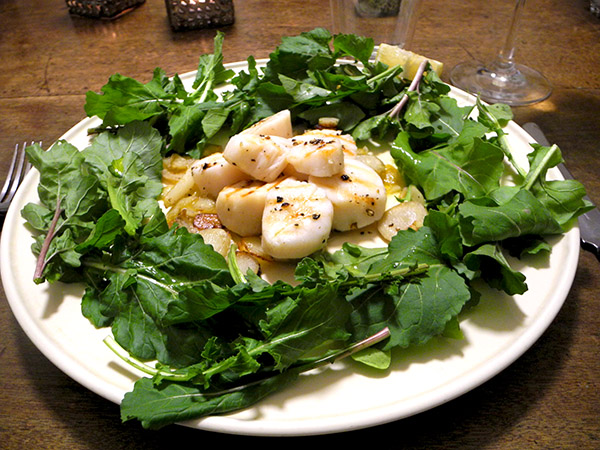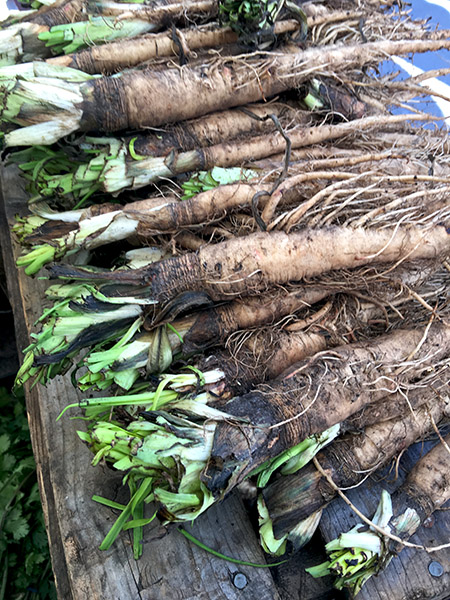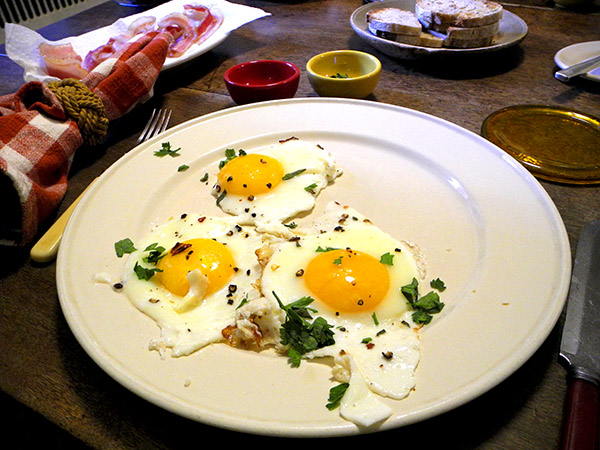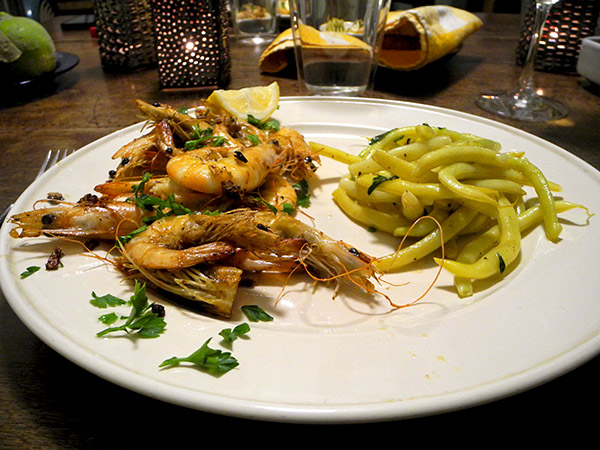it’s looking like we’ve left summer behind us
I occasionally check out the display case in the Whole Foods meat department when I pass it on the way to goodies at the back of the store that I can’t get at the Greenmarket. The other day a small sign in front of a row of veal chops attracted my attention, especially since I didn’t remember ever seeing veal in the store before. A printed note just below the price said that the meat had come from a ‘Provitello Farms’, in Elba, New York. That was the kind of specific local sourcing I would not have expected from an emporium the size of Whole Foods, so I did some research when I got home, to see what it was about.
A few days later I was back. It was a Sunday, I had made no other arrangements for dinner, and I had decided, as an omnivore and someone very conscious of the sources of the food Barry and I consume, to be as reasonable as possible on the subject of veal, meaning, essentially, the morality of its consumption. I was acquainted with all of the arguments on both sides, but my family history, my understanding of the place of a young calf, otherwise useless to any market, in the broader context of domesticated livestock, and my awareness of the huge variations to be found in the treatment of this particular animal, led me back to the meat counter I had investigated earlier in the week.
A word on the potatoes. They came from Berried Treasures in the Greenmarket, where they are labelled ‘Pata Chaucha’ (my translation would be ‘new potato’). It was my first full outing with an Andean heirloom variety whose seeds had been given to the farmer, Franca Tantillo, by an Ecuadorean, David, one of the people who works with Dave Tifford of Fantastic Gardens of Long Island. As new potatoes, they might properly have been stored in a cooler place, like the crisper drawer, but last Wednesday I had put them inside a paper bag in my larder. When I pulled them out I noted to myself once again that they would not have won any beauty contests; they might even have aged in those few days. After I had roasted them however I realized beauty was not the story. They were absolutely delicious, incredibly nutty, and with a texture not unlike the very best grilled or roasted eggplant, but juicier. Wonderful.
- two small veal loin chops from Jurian Bartlese‘s small Provitello Farms, in Elva, New York purchased at Whole Foods [its source, and the arguments for its production explained pretty well here], dried, rubbed with olive oil, salt, and pepper, brought full to room temperature, seared in an small cast iron enameled pan, rubbed with crushed Calabrian Rocambole garlic from Keith’s Farm, roasted in a 375º oven for about eight minutes, turning once, allowed to rest for five minutes before being drizzled with the pan juices, a squeeze of lemon, olive oil, and a scattering of finely-chopped young scallions from John D. Madura Farm, and chopped thyme from Hawthorne Valley Farm
- South American Pata Chaucha (heirloom potatoes) from Berried Treasures, scrubbed, halved, tossed with olive oil, salt, pepper, and a mix of chopped sage from Norwich Meadows Farm and chopped rosemary from Hoeffner Farms
- loose curly purple kale leaves from Lucky Dog Organic Farm, wilted with olive oil in which two slightly-crushed Calabrian Rocambole garlic from Keith’s Farm had been allowed to heat until pungent, seasoned with salt, pepper, and a drizzle of fresh olive oil
- the wine was an Italian (Piedmont) red, Brovia Dolcetto d’Alba Vignavillej 2012
- the music was, first, Mahler’s Symphony No.1, performed by Bernstein and the New York Philharmonic, followed by Christopher Rouse’s ‘Der Gerettene Alberich‘
